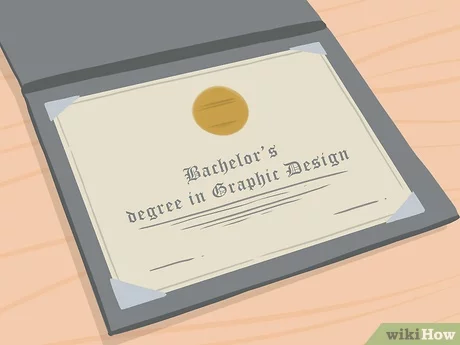Simple Steps to Become a Graphic Designer
Do you have a knack for visual communication? Are you drawn to compelling logos, eye-catching websites, and impactful marketing materials? If so, a career in graphic design might be the perfect fit. This blog outlines simple yet effective steps to help you embark on your journey to becoming a graphic designer.
- Develop a Strong Foundation in Design Principles:
Before diving into software, it’s crucial to understand the fundamental principles of design. These principles are the building blocks of effective visual communication and include:
- Typography: The art and technique of arranging type to make written language legible, readable, and appealing.
- Color Theory: Understanding how colors interact and evoke emotions.
- Composition: The arrangement of elements within a design to create a visually balanced and harmonious image.
- Layout: The organization of content on a page or screen to create a clear and effective message.
- Imagery: The use of photographs, illustrations, and other visual elements to enhance a design.
- Learn Essential Design Software:
While hand-drawing skills are valuable, proficiency in industry-standard design software is essential for professional graphic designers. Key software to learn includes:
- Adobe Photoshop: For photo editing, image manipulation, and creating raster graphics.
- Adobe Illustrator: For creating vector graphics, logos, illustrations, and typography.
- Adobe InDesign: For layout design, creating brochures, magazines, and other print materials.
- Figma/Sketch: For UI/UX design, creating website and app interfaces.
Numerous online resources, tutorials, and courses are available to help you learn these software programs.
- Build a Strong Portfolio:
Your portfolio is your most important marketing tool. It showcases your skills, creativity, and design style to potential employers or clients. Include a variety of projects in your portfolio, demonstrating your versatility and range. Consider including:
- Personal projects: Design logos, posters, or websites for fictional clients.
- Freelance work: Offer your design services to friends, family, or local businesses.
- School projects: If you’re studying design, include your best academic work.
- Gain Practical Experience:
Practical experience is invaluable for developing your skills and building your professional network. Consider:
- Internships: Interning at a design agency, marketing firm, or in-house design department can provide valuable real-world experience.
- Freelancing: Offering your services as a freelance designer can help you build your portfolio and gain experience working with clients.
- Network and Connect with Other Designers:
Networking with other designers can provide valuable opportunities for learning, collaboration, and career advancement. Attend design events, join online design communities, and connect with designers on social media.
- Formal Education (Optional but Recommended):
While a formal degree isn’t always mandatory, it can provide a strong foundation in design theory, history, and practice. Consider pursuing a degree or diploma in:
- Graphic Design
- Visual Communication
- Communication Design
Top Design Colleges and Entrance Exams in India:
If you choose to pursue formal design education in India, here are some top colleges and relevant entrance exams:
- National Institute of Design (NID): NID Design Aptitude Test (NID DAT)
- Indian Institutes of Technology (IITs) (with design departments): Undergraduate Common Entrance Examination for Design (UCEED)
- National Institute of Fashion Technology (NIFT) (offers some communication design related courses): NIFT Entrance Exam
- Srishti Institute of Art, Design and Technology: Srishti Entrance and Portfolio Review
- Pearl Academy: Pearl Academy Entrance Exam
- Stay Updated with Industry Trends:
The design industry is constantly evolving. Stay updated with the latest trends, technologies, and software by reading design blogs, following design influencers on social media, and attending design conferences and workshops.
Key Takeaways:
Becoming a successful graphic designer takes time, dedication, and continuous learning. By following these steps, building a strong portfolio, and gaining practical experience, you can pave the way for a rewarding career in this exciting field. Remember to be passionate, persistent, and always eager to learn and grow.

